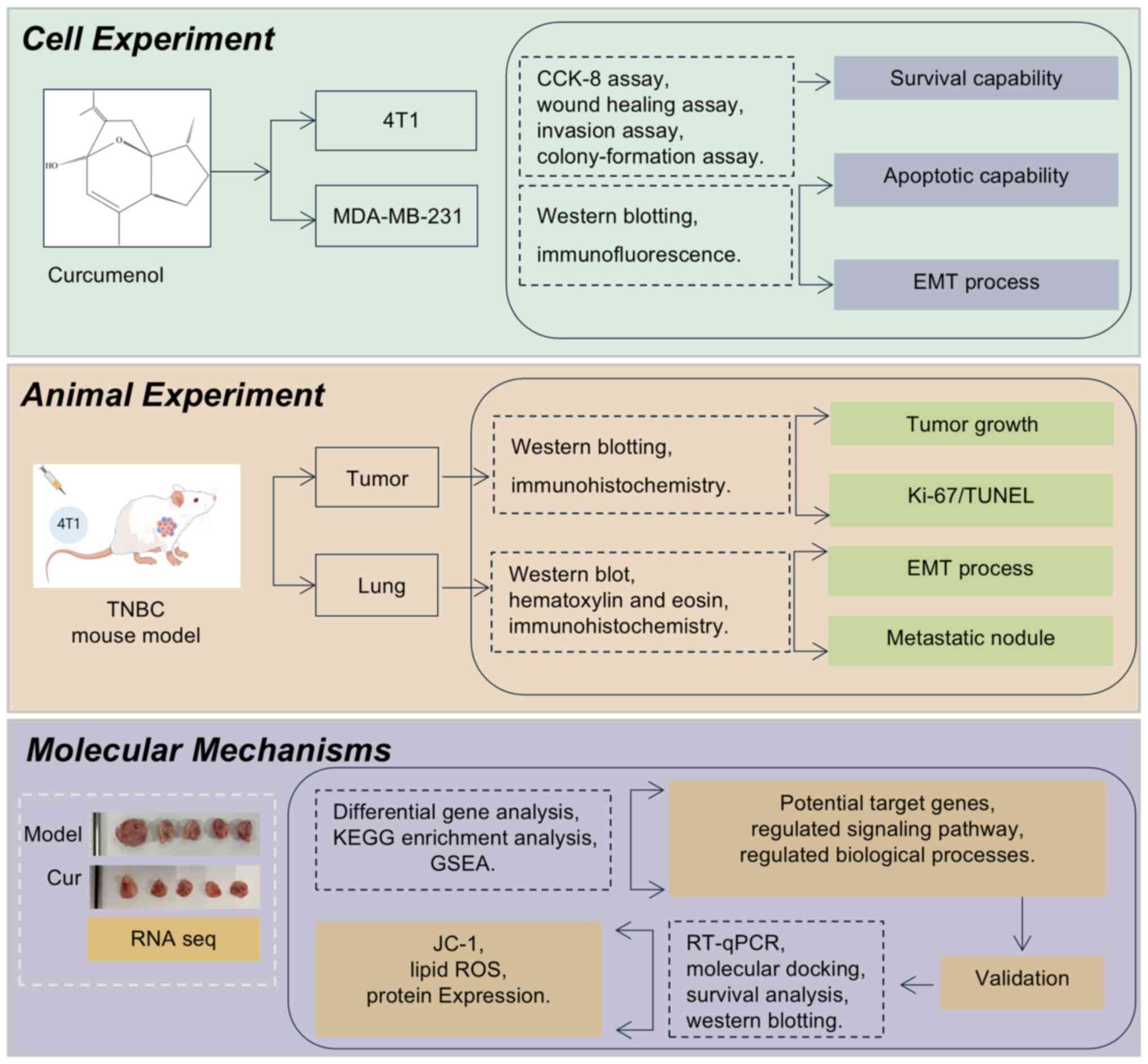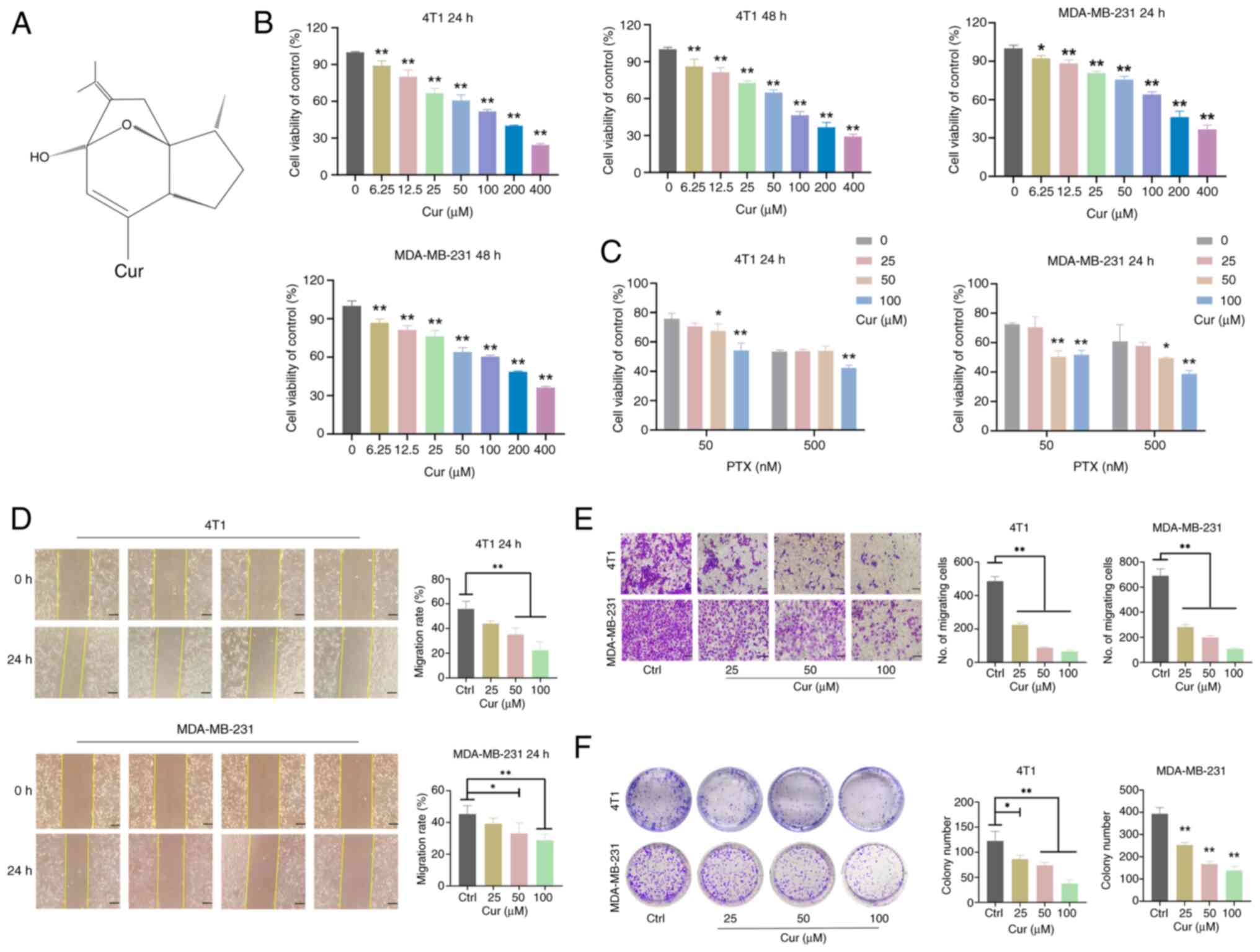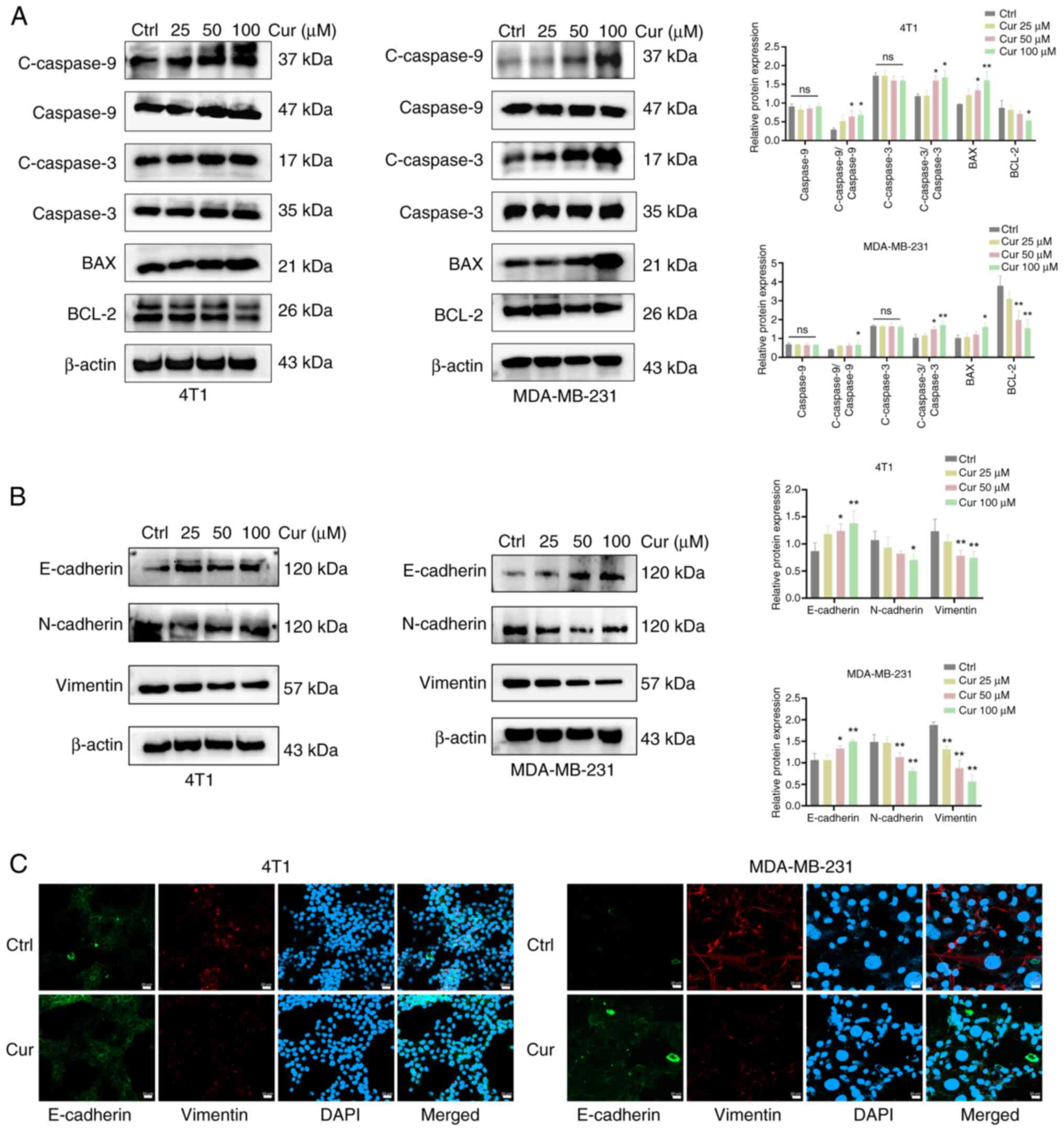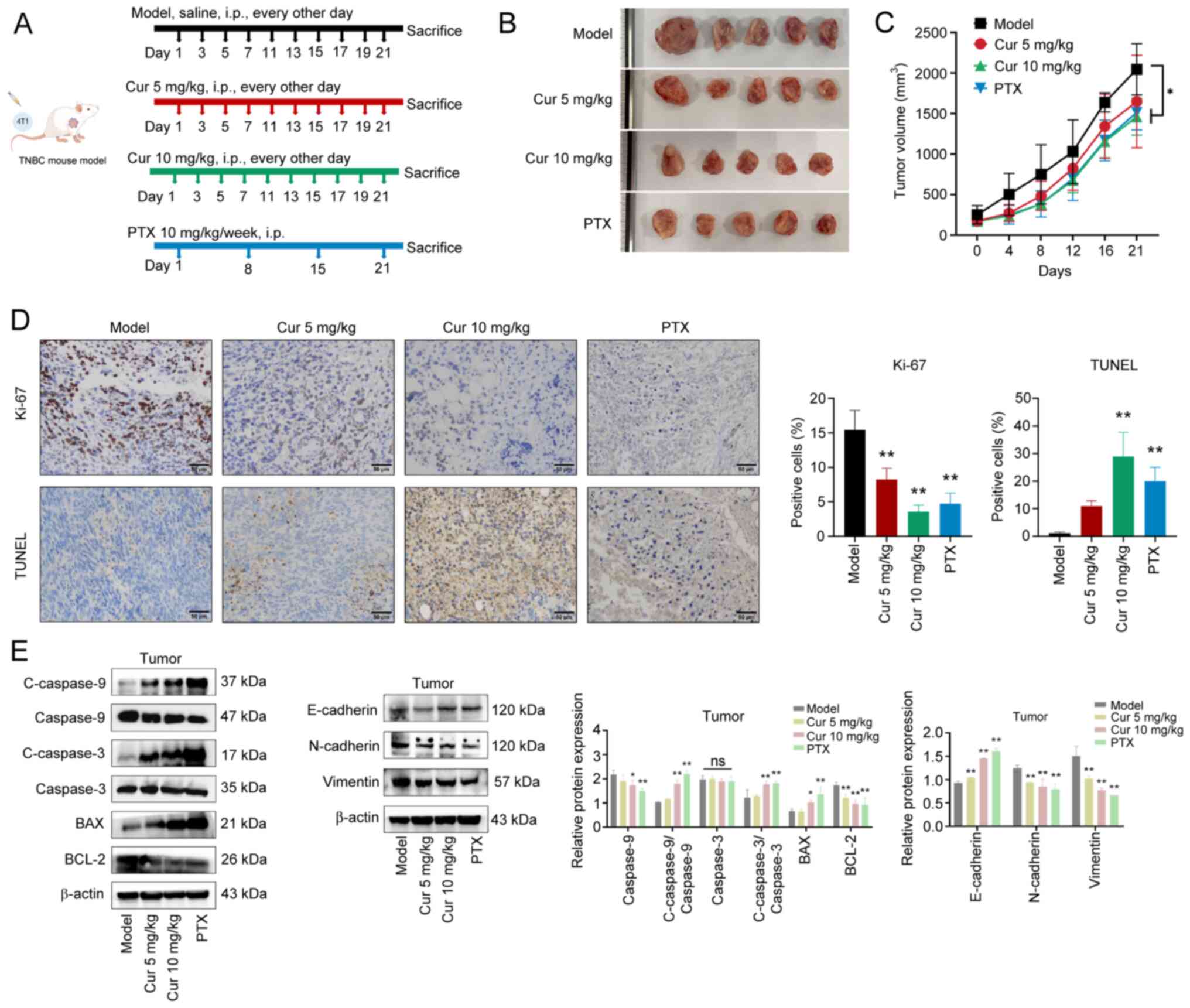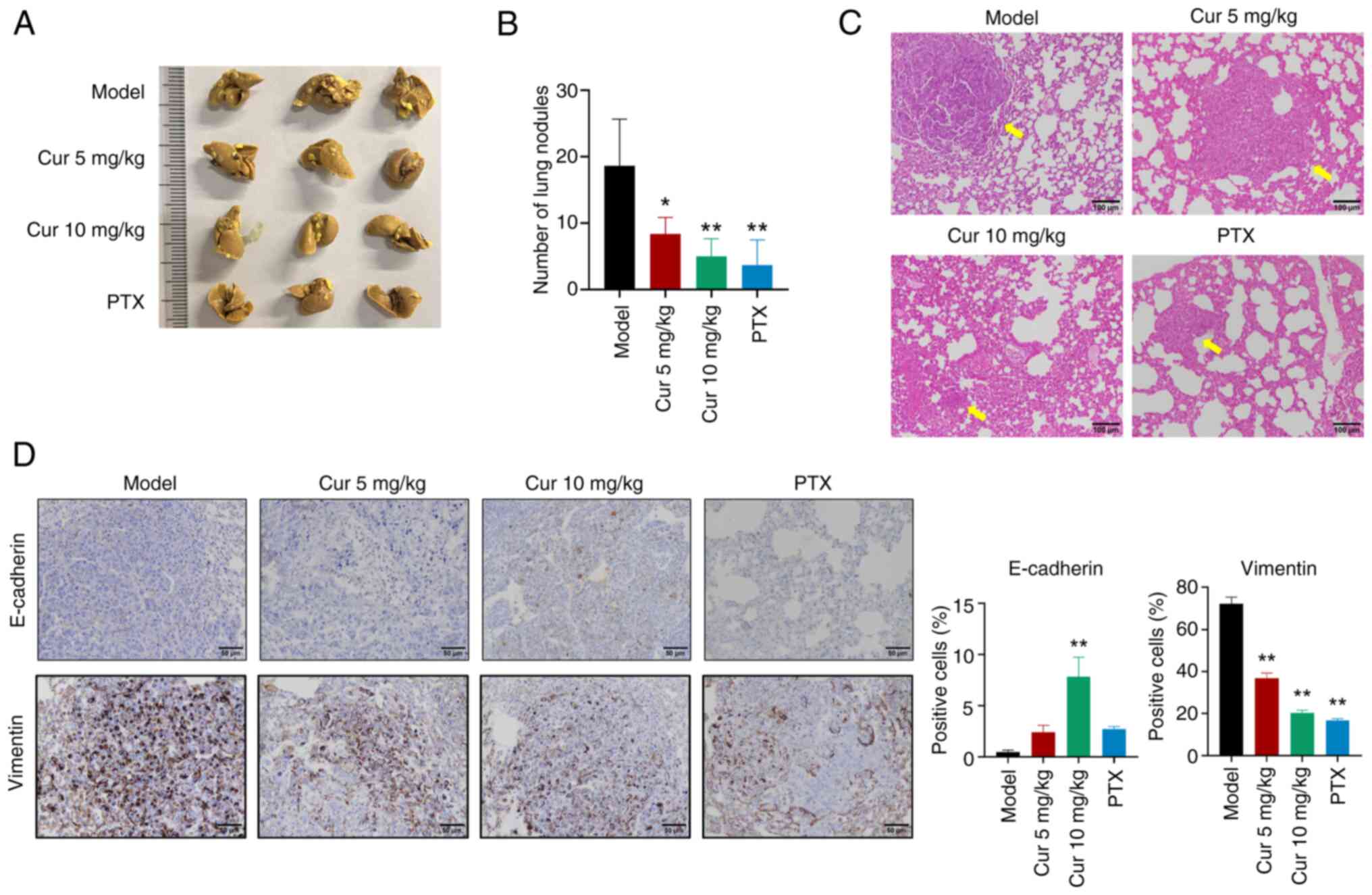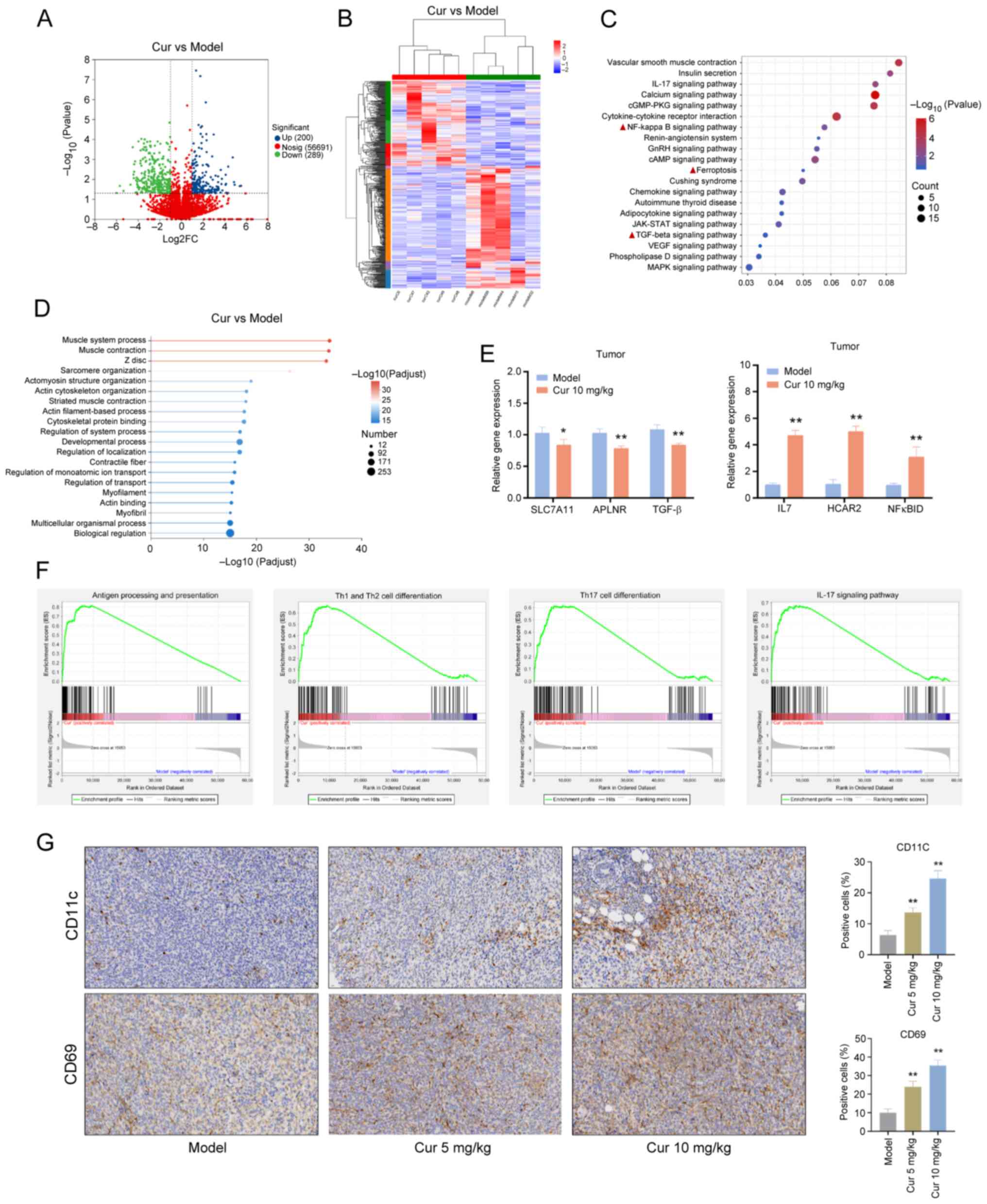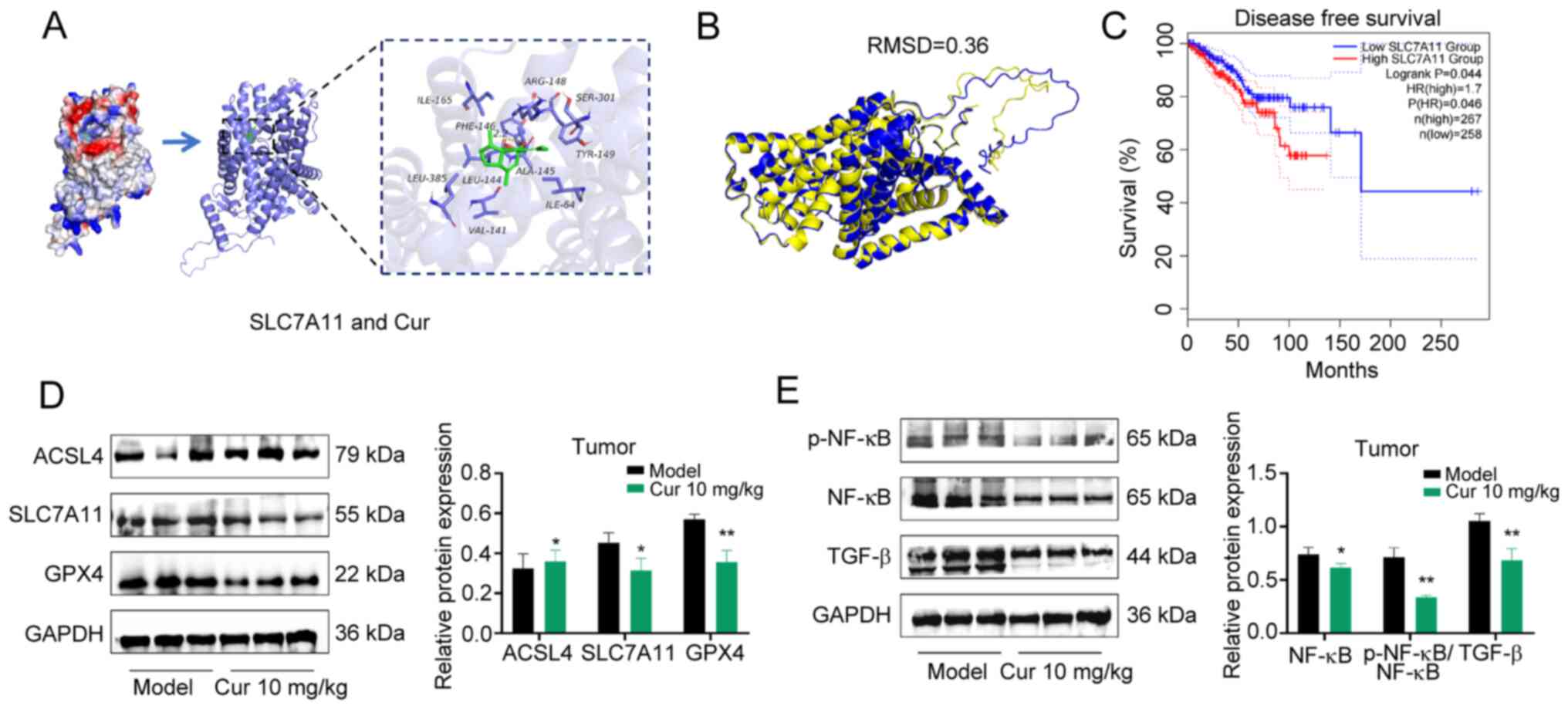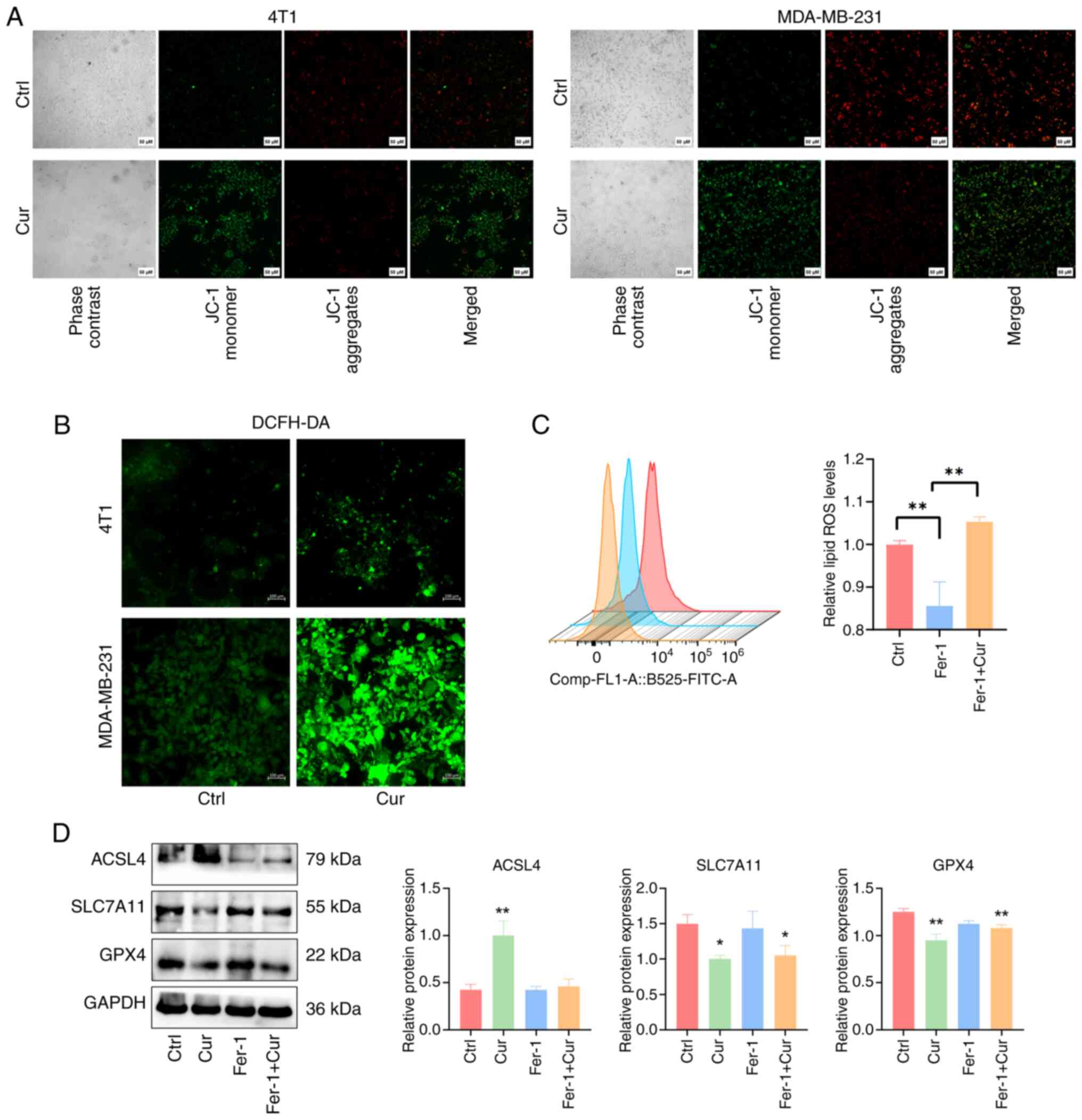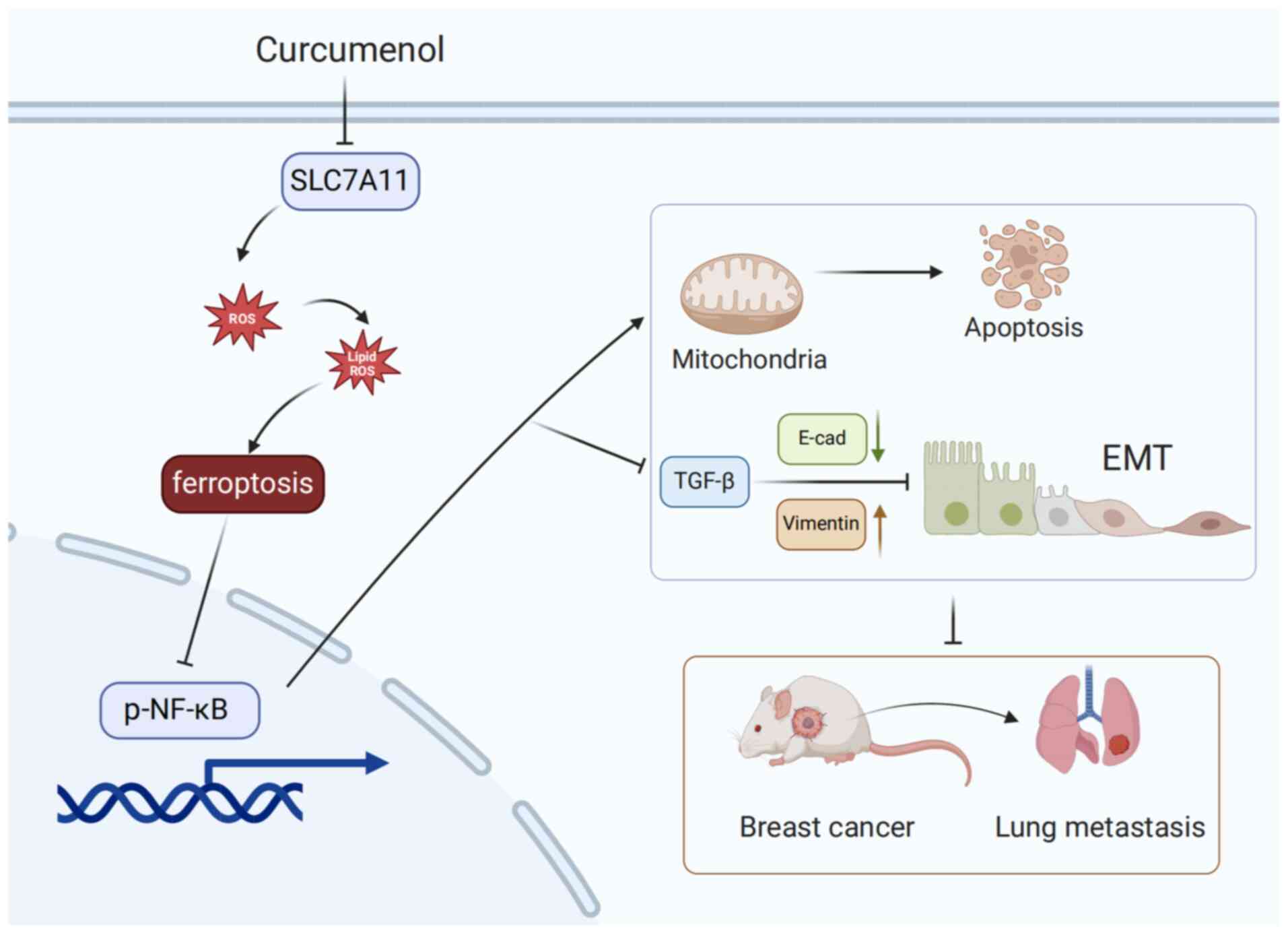|
1
|
Joaquin Garcia A, Rediti M, Venet D,
Majjaj S, Kammler R, Munzone E, Gianni L, Thürlimann B, Laáng I,
Colleoni M, et al: Differential benefit of metronomic chemotherapy
among triple-negative breast cancer subtypes treated in the IBCSG
trial 22-00. Clin Cancer Res. 29:4908–4919. 2023. View Article : Google Scholar : PubMed/NCBI
|
|
2
|
Siegel RL, Giaquinto AN and Jemal A:
Cancer statistics, 2024. CA Cancer J Clin. 74:12–49. 2024.
View Article : Google Scholar : PubMed/NCBI
|
|
3
|
Rusakiewicz S, Tyekucheva S, Tissot-Renaud
S, Chaba K, Imbimbo M, Benedetti F, Kammler R, Hornfeld J, Munzone
E, Gianni L, et al: Multiplexed high-throughput immune cell imaging
in patients with high-risk triple negative early breast cancer:
Analysis from the international breast cancer study group (IBCSG)
trial 22-00. Eur J Cancer. 200:1135352024. View Article : Google Scholar : PubMed/NCBI
|
|
4
|
Hanna D, Merrick S, Ghose A, Devlin MJ,
Yang DD, Phillips E, Okines A, Chopra N, Papadimatraki E, Ross K,
et al: Real world study of sacituzumab govitecan in metastatic
triple-negative breast cancer in the United Kingdom. Br J Cancer.
130:1916–1920. 2024. View Article : Google Scholar : PubMed/NCBI
|
|
5
|
Dent R, André F, Gonçalves A, Martin M,
Schmid P, Schütz F, Kümmel S, Swain SM, Bilici A, Loirat D, et al:
IMpassion132 double-blind randomised phase III trial of
chemotherapy with or without atezolizumab for early relapsing
unresectable locally advanced or metastatic triple-negative breast
cancer. Ann Oncol. 35:630–642. 2024. View Article : Google Scholar : PubMed/NCBI
|
|
6
|
Lynce F, Mainor C, Donahue RN, Geng X,
Jones G, Schlam I, Wang H, Toney NJ, Jochems C, Schlom J, et al:
Adjuvant nivolumab, capecitabine or the combination in patients
with residual triple-negative breast cancer: The OXEL randomized
phase II study. medRxiv [Preprint]: 2023.12.04.23297559. 2023.
|
|
7
|
Schmid P, Cortes J, Pusztai L, McArthur H,
Kümmel S, Bergh J, Denkert C, Park YH, Hui R, Harbeck N, et al:
Pembrolizumab for early triple-negative breast cancer. N Engl J
Med. 382:810–821. 2020. View Article : Google Scholar : PubMed/NCBI
|
|
8
|
Wang S, Li J, Xu S, Wang N, Pan B, Yang B,
Zheng Y, Zhang J, Peng F, Peng C and Wang Z: Baohuoside I
chemosensitises breast cancer to paclitaxel by suppressing
extracellular vesicle/CXCL1 signal released from apoptotic cells. J
Extracell Vesicles. 13:e124932024. View Article : Google Scholar : PubMed/NCBI
|
|
9
|
Wu C, Sun C, Liu G, Qin Y, Xue X, Wu X,
Wang Q, Liu J, Ye Z, Li Q, et al: Effectiveness of the sanyin
formula plus chemotherapy on survival in women with triple-negative
breast cancer: A randomized controlled trial. Front Oncol.
12:8501552022. View Article : Google Scholar : PubMed/NCBI
|
|
10
|
Kan LLY, Chan BCL, Leung PC and Wong CK:
Natural-product-derived adjunctive treatments to conventional
therapy and their immunoregulatory activities in triple-negative
breast cancer. Molecules. 28:58042023. View Article : Google Scholar : PubMed/NCBI
|
|
11
|
Alam S, Lee J and Sahebkar A: Curcumin in
cancer prevention: Insights from clinical trials and strategies to
enhance bioavailability. Curr Pharm Des. 30:1838–1851. 2024.
View Article : Google Scholar : PubMed/NCBI
|
|
12
|
Zhao P, Qiu J, Pan C, Tang Y, Chen M, Song
H, Yang J and Hao X: Potential roles and molecular mechanisms of
bioactive ingredients in Curcumae Rhizoma against breast cancer.
Phytomedicine. 114:1548102023. View Article : Google Scholar : PubMed/NCBI
|
|
13
|
Zhang R, Pan T, Xiang Y, Zhang M, Xie H,
Liang Z, Chen B, Xu C, Wang J, Huang X, et al: Curcumenol triggered
ferroptosis in lung cancer cells via lncRNA H19/miR-19b-3p/FTH1
axis. Bioact Mater. 13:23–36. 2021.
|
|
14
|
Mao Z, Zhong L, Zhuang X, Liu H and Peng
Y: Curcumenol targeting YWHAG inhibits the pentose phosphate
pathway and enhances antitumor effects of cisplatin. Evid Based
Complement Alternat Med. 2022:39889162022. View Article : Google Scholar : PubMed/NCBI
|
|
15
|
Fuhrmann J, Rurainski A, Lenhof HP and
Neumann D: A new Lamarckian genetic algorithm for flexible
ligand-receptor docking. J Comput Chem. 31:1911–1918. 2010.
View Article : Google Scholar : PubMed/NCBI
|
|
16
|
Livak KJ and Schmittgen TD: Analysis of
relative gene expression data using real-time quantitative PCR and
the 2(-Delta Delta C(T)) method. Methods. 25:402–408. 2001.
View Article : Google Scholar
|
|
17
|
Liu Q, Li R and Lin J: No difference among
inhaled anesthetics on the growth and metastasis of murine 4T1
breast cancers in a mouse model of spontaneous metastasis. Front
Pharmacol. 13:7941092022. View Article : Google Scholar : PubMed/NCBI
|
|
18
|
Fang Y, Wang Y, Ma H, Guo Y, Xu R, Chen X,
Chen X, Lv Y, Li P and Gao Y: TFAP2A downregulation mediates
tumor-suppressive effect of miR-8072 in triple-negative breast
cancer via inhibiting SNAI1 transcription. Breast Cancer Res.
26:1032024. View Article : Google Scholar : PubMed/NCBI
|
|
19
|
Nielsen AJ, Albert GK, Sanchez A, Chen J,
Liu J, Davalos AS, Geng D, Bradeen X, Hintzsche JD, Robinson W, et
al: DNA-PK inhibition enhances neoantigen diversity and increases T
cell responses to immunoresistant tumors. J Clin Invest.
134:e1802782024. View Article : Google Scholar : PubMed/NCBI
|
|
20
|
Basu A, Ramamoorthi G, Albert G, Gallen C,
Beyer A, Snyder C, Koski G, Disis ML, Czerniecki BJ and Kodumudi K:
Differentiation and regulation of TH cells: A balancing Act for
cancer immunotherapy. Front Immunol. 12:6694742021. View Article : Google Scholar :
|
|
21
|
Boieri M, Malishkevich A, Guennoun R,
Marchese E, Kroon S, Trerice KE, Awad M, Park JH, Iyer S, Kreuzer
J, et al: CD4+ T helper 2 cells suppress breast cancer
by inducing terminal differentiation. J Exp Med. 219:e202019632022.
View Article : Google Scholar
|
|
22
|
Feng S, Li S, Wu Z, Li Y, Wu T, Zhou Z,
Liu X, Chen J, Fu S, Wang Z, et al: Saffron improves the efficacy
of immunotherapy for colorectal cancer through the IL-17 signaling
pathway. J Ethnopharmacol. 337:1188542025. View Article : Google Scholar
|
|
23
|
Chen X, Cui H, Qin L, Liu R, Fang F and
Wang Z: Soybean lecithin-gallic acid complex sensitizes lung cancer
cells to radiation through ferroptosis regulated by
Nrf2/SLC7A11/GPX4 pathway. Nutrients. 17:12622025. View Article : Google Scholar : PubMed/NCBI
|
|
24
|
Wang Y, Guan WX, Zhou Y, Zhang XY and Zhao
HJ: Red ginseng polysaccharide promotes ferroptosis in gastric
cancer cells by inhibiting PI3K/Akt pathway through down-regulation
of AQP3. Cancer Biol Ther. 25:22848492024. View Article : Google Scholar :
|
|
25
|
Ning Y, Fang S, Zhang R, Fang J, Lin K,
Ding Y, Nie H, Zhou J, Zhao Q, Ke H, et al: Simvastatin induces
ferroptosis and activates anti-tumor immunity to sensitize
anti-PD-1 immunotherapy in microsatellite stable gastric cancer.
Int Immunopharmacol. 142:1132442024. View Article : Google Scholar : PubMed/NCBI
|
|
26
|
Paulino P, Vitari G, Rezende A, Couto J,
Antunes S, Domingos A, Peckle M, Massard C, Araújo F and Santos H:
Characterization of the rhipicephalus (Boophilus) microplus
sialotranscriptome profile in response to Theileria equi infection.
Pathogens. 10:1672021. View Article : Google Scholar : PubMed/NCBI
|
|
27
|
Shih VFS, Kearns JD, Basak S, Savinova OV,
Ghosh G and Hoffmann A: Kinetic control of negative feedback
regulators of NF-kappaB/RelA determines their pathogen- and
cytokine-receptor signaling specificity. Proc Natl Acad Sci USA.
106:9619–9624. 2009. View Article : Google Scholar : PubMed/NCBI
|
|
28
|
Wang X, Xue X, Pang M, Yu L, Qian J, Li X,
Tian M, Lyu A, Lu C and Liu Y: Epithelial-mesenchymal plasticity in
cancer: Signaling pathways and therapeutic targets. MedComm (2020).
5:e6592024. View Article : Google Scholar : PubMed/NCBI
|
|
29
|
Zhang Y, Yang Y, Qi X, Cui P, Kang Y, Liu
H, Wei Z and Wang H: SLC14A1 and TGF-β signaling: A feedback loop
driving EMT and colorectal cancer metachronous liver metastasis. J
Exp Clin Cancer Res. 43:2082024. View Article : Google Scholar
|
|
30
|
Li Y, Lin H, Sun Y, Zhao R, Liu Y, Han J,
Zhu Y, Jin N, Li X, Zhu G and Li Y: Platycodin D2 mediates
incomplete autophagy and ferroptosis in breast cancer cells by
regulating mitochondrial ROS. Phytother Res. 39:581–592. 2025.
View Article : Google Scholar
|
|
31
|
Xu G, Zhou Q, Qi J, Li Z, Yin L, Li Z, Lu
C, Zhao B and Shen Y: Resveratrol-derived inhibitors of the E3
ubiquitin ligase PELI1 inhibit the metastasis of triple-negative
breast cancer. Eur J Med Chem. 265:1160602024. View Article : Google Scholar
|
|
32
|
Xie J, Deng X, Xie Y, Zhu H, Liu P, Deng
W, Ning L, Tang Y, Sun Y, Tang H, et al: Multi-omics analysis of
disulfidptosis regulators and therapeutic potential reveals
glycogen synthase 1 as a disulfidptosis triggering target for
triple-negative breast cancer. MedComm (2020). 5:e5022024.
View Article : Google Scholar : PubMed/NCBI
|
|
33
|
Zou Y, Yang A, Chen B, Deng X, Xie J, Dai
D, Zhang J, Tang H, Wu T, Zhou Z, et al: crVDAC3 alleviates
ferroptosis by impeding HSPB1 ubiquitination and confers
trastuzumab deruxtecan resistance in HER2-low breast cancer. Drug
Resist Updat. 77:1011262024. View Article : Google Scholar : PubMed/NCBI
|
|
34
|
Su Z, Liu Y, Wang L and Gu W: Regulation
of SLC7A11 as an unconventional checkpoint in tumorigenesis through
ferroptosis. Genes Dis. 12:1012542024. View Article : Google Scholar : PubMed/NCBI
|
|
35
|
Zhou D, Sun L, Li J and Yang Y:
Schisandrin B inhibits inflammation and ferroptosis in
S.aureus-induced mastitis through regulating SIRT1/p53/SLC7A11
signaling pathway. Int Immunopharmacol. 137:1124302024. View Article : Google Scholar : PubMed/NCBI
|
|
36
|
Qiu Y, Wang H, Guo Q, Liu Y, He Y, Zhang
G, Yang C, Du Y and Gao F: CD44s-activated tPA/LRP1-NFκB pathway
drives lamellipodia outgrowth in luminal-type breast cancer cells.
Front Cell Dev Biol. 11:12248272023. View Article : Google Scholar
|
|
37
|
Wu Y, Dai S, Zhang Y, Li Z, Zhu B, Liu Q,
Wo L, Yu Z, Yuan X and Dou X: Atractylenolide II combined with
Interferon-γ synergistically ameliorates colorectal cancer
progression in vivo and in vitro by blocking the NF-kB p65/PD-L1
pathway. J Cancer. 15:4328–4344. 2024. View Article : Google Scholar :
|
|
38
|
Ayaz MO, Bhat AQ, Akhter Z, Badsera N,
Hossain MM, Showket F, Parveen S, Dar MS, Tiwari H, Kumari N, et
al: Identification of a novel GSK3β inhibitor involved in
abrogating KRas dependent pancreatic tumors in Wnt/beta-catenin and
NF-kB dependent manner. Life Sci. 351:1228402024. View Article : Google Scholar
|
|
39
|
Pasha A, Kumar K, Heena SK, Arnold Emerson
I and Pawar SC: Inhibition of NF-kB and COX-2 by andrographolide
regulates the progression of cervical cancer by promoting PTEN
expression and suppressing PI3K/AKT signalling pathway. Sci Rep.
14:120202024. View Article : Google Scholar : PubMed/NCBI
|
|
40
|
Barnes P, Mensah A, Derkyi-Kwarteng L,
Adankwa E, Agbo E, Yahaya ES, Amoani B, Adjei G, Ka-Chungu SMA,
Akakpo PK, et al: Prognostic significance of nuclear factor kappa B
(p65) among breast cancer patients in cape coast teaching hospital.
Med Princ Pract. 33:1–11. 2024.Epub ahead of print. View Article : Google Scholar : PubMed/NCBI
|
|
41
|
Huang F, Dai Z, Yu J, Wang K, Chen C, Chen
D, Zhang J, Zhao J, Li M, Zhang W, et al: RBM7 deficiency promotes
breast cancer metastasis by coordinating MFGE8 splicing switch and
NF-kB pathway. Elife. 13:RP953182024. View Article : Google Scholar : PubMed/NCBI
|
|
42
|
He XY, Xiong XJ, Liu MJ, Liang JT, Liu FY,
Xiao JY and Wu LJ: Dahuang zhechong pill alleviates liver fibrosis
progression by regulating p38 MAPK/NF-κ B/TGF-β1 pathway. Chin J
Integr Med. 30:1113–1120. 2024. View Article : Google Scholar : PubMed/NCBI
|
|
43
|
Mazi FA, Cakiroglu E, Uysal M, Kalyoncu M,
Demirci D, Sozeri PYG, Yilmaz GO, Ozhan SE and Senturk S: The
paracaspase MALT1 is a downstream target of Smad3 and potentiates
the crosstalk between TGF-β and NF-kB signaling pathways in cancer
cells. Cell Signal. 105:1106112023. View Article : Google Scholar
|
|
44
|
Zhao M, Qiu D, Miao X, Yang W, Li S, Cheng
X, Tang J, Chen H, Ruan H, Liu Y, et al: Melatonin delays arthritis
inflammation and reduces cartilage matrix degradation through the
SIRT1-mediated NF-κB/Nrf2/TGF-β/BMPs pathway. Int J Mol Sci.
25:62022024. View Article : Google Scholar
|
|
45
|
Cai Z, Gao L, Hu K and Wang QM:
Parthenolide enhances the metronomic chemotherapy effect of
cyclophosphamide in lung cancer by inhibiting the NF-kB signaling
pathway. World J Clin Oncol. 15:895–907. 2024. View Article : Google Scholar : PubMed/NCBI
|
|
46
|
Louault K, Blavier L, Lee MH, Kennedy RJ,
Fernandez GE, Pawel BR, Asgharzadeh S and DeClerck YA: Nuclear
factor-κB activation by transforming growth factor-β1 drives tumour
microenvironment-mediated drug resistance in neuroblastoma. Br J
Cancer. 131:90–100. 2024. View Article : Google Scholar : PubMed/NCBI
|
|
47
|
Li Z, Hao E, Cao R, Lin S, Zou L, Huang T,
Du Z, Hou X and Deng J: Analysis on internal mechanism of zedoary
turmeric in treatment of liver cancer based on pharmacodynamic
substances and pharmacodynamic groups. Chin Herb Med. 14:479–493.
2022.PubMed/NCBI
|
|
48
|
Chen X, Pei L, Zhong Z, Guo J, Zhang Q and
Wang Y: Anti-tumor potential of ethanol extract of Curcuma
phaeocaulis Valeton against breast cancer cells. Phytomedicine.
18:1238–1243. 2011. View Article : Google Scholar : PubMed/NCBI
|
|
49
|
Hu C, Li M, Guo T, Wang S, Huang W, Yang
K, Liao Z, Wang J, Zhang F and Wang H: Anti-metastasis activity of
curcumin against breast cancer via the inhibition of stem cell-like
properties and EMT. Phytomedicine. 58:1527402019. View Article : Google Scholar : PubMed/NCBI
|
|
50
|
Li M, Guo T, Lin J, Huang X, Ke Q, Wu Y,
Fang C and Hu C: Curcumin inhibits the invasion and metastasis of
triple negative breast cancer via Hedgehog/Gli1 signaling pathway.
J Ethnopharmacol. 283:1146892022. View Article : Google Scholar
|
|
51
|
Tian NN, Zheng YB, Li ZP, Zhang FW and
Zhang JF: Histone methylatic modification mediates the
tumor-suppressive activity of curcumol in hepatocellular carcinoma
via an Hotair/EZH2 regulatory axis. J Ethnopharmacol.
280:1144132021. View Article : Google Scholar : PubMed/NCBI
|
|
52
|
Al-Amin M, Eltayeb NM, Hossain CF, Rahiman
SSF, Khairuddean M and Muhamad Salhimi S: Bioactive compounds from
Curcuma aeruginosa and the effect of comosone II on the migration
and invasion of breast cancer cells. J Asian Nat Prod Res. 4:1–12.
2022.Epub ahead of print.
|
|
53
|
Shen Z, Yu N, Zhang Y, Jia M, Sun Y, Li Y
and Zhao L: The potential roles of HIF-1α in epithelial-mesenchymal
transition and ferroptosis in tumor cells. Cell Signal.
122:1113452024. View Article : Google Scholar
|
|
54
|
Fan J, Lin H, Luo J and Chen L:
4-Methoxydalbergione inhibits the tumorigenesis and metastasis of
lung cancer through promoting ferroptosis via the DNMT1/system
Xc-/GPX4 pathway. Mol Med Rep. 31:192025. View Article : Google Scholar
|
|
55
|
Rossi T, Iorio E, Chirico M, Pisanu ME,
Amodio N, Cantafio MEG, Perrotta I, Colciaghi F, Fiorillo M,
Gianferrari A, et al: BET inhibitors (BETi) influence oxidative
phosphorylation metabolism by affecting mitochondrial dynamics
leading to alterations in apoptotic pathways in triple-negative
breast cancer (TNBC) cells. Cell Prolif. 57:e137302024. View Article : Google Scholar : PubMed/NCBI
|
|
56
|
Yang X, Yang R, Zhang Y, Shi Y, Ma M, Li
F, Xie Y, Han X and Liu S: Xianlinglianxiafang inhibited the growth
and metastasis of triple-negative breast cancer via activating
PPARγ/AMPK signaling pathway. Biomed Pharmacother. 165:1151642023.
View Article : Google Scholar
|
|
57
|
Chen G, Wang Y, Li M, Xu T, Wang X, Hong B
and Niu Y: Curcumol induces HSC-T6 cell death through suppression
of Bcl-2: Involvement of PI3K and NF-κB pathways. Eur J Pharm Sci.
65:21–28. 2014. View Article : Google Scholar : PubMed/NCBI
|
|
58
|
Al-Amin M, Eltayeb NM, Khairuddean M and
Salhimi SM: Bioactive chemical constituents from Curcuma caesia
Roxb. rhizomes and inhibitory effect of curcuzederone on the
migration of triple-negative breast cancer cell line MDA-MB-231.
Nat Prod Res. 35:3166–3170. 2021. View Article : Google Scholar
|
|
59
|
Zhou Y, Moon JH, Kim JT, Qiu S, Lee SB,
Park HJ, Son MJ, Lee GY, Kwon JW, Park SH, et al: Curcumol
metabolized by rat liver S9 fraction and orally administered in
mouse suppressed the proliferation of colon cancer in vitro and in
vivo. Food Sci Biotechnol. 33:171–180. 2023. View Article : Google Scholar
|
|
60
|
Sheng W, Ding J, Liu L, Wang N, Lu B, You
X, He Q and Zhou Q: Curcumol inhibits the development of prostate
cancer by miR-125a/STAT3 axis. Evid Based Complement Alternat Med.
2022:93174022022. View Article : Google Scholar : PubMed/NCBI
|
|
61
|
Yu C, Xing H, Fu X, Zhang Y, Yan X, Feng
J, He Z, Ru L, Huang C and Liang J: Effect and mechanisms of
shikonin on breast cancer cells in vitro and in vivo. BMC
Complement Med Ther. 24:3892024. View Article : Google Scholar : PubMed/NCBI
|
|
62
|
Simões RV, Serganova IS, Kruchevsky N,
Leftin A, Shestov AA, Thaler HT, Sukenick G, Locasale JW, Blasberg
RG, Koutcher JA and Ackerstaff E: Metabolic plasticity of
metastatic breast cancer cells: Adaptation to changes in the
microenvironment. Neoplasia. 17:671–684. 2025. View Article : Google Scholar
|
|
63
|
He D, Tan XN, Li LP, Gao WH, Tian XF and
Zeng PH: Brazilin actuates ferroptosis in breast cancer cells via
p53/SLC7A11/GPX4 signaling pathway. Chin J Integr Med.
30:1001–1006. 2024. View Article : Google Scholar : PubMed/NCBI
|
|
64
|
Yang R, Xie Y, Li Q, Ye Y, Shi Y, Zhao X,
Wu C, Xu Y, Wang R, Zhang Y, et al: Ruyiping extract reduces lung
metastasis in triple negative breast cancer by regulating
macrophage polarization. Biomed Pharmacother. 141:1118832021.
View Article : Google Scholar : PubMed/NCBI
|
|
65
|
Uribesalgo I, Hoffmann D, Zhang Y,
Kavirayani A, Lazovic J, Berta J, Novatchkova M, Pai TP, Wimmer RA,
László V, et al: Apelin inhibition prevents resistance and
metastasis associated with anti-angiogenic therapy. EMBO Mol Med.
11:e92662019. View Article : Google Scholar : PubMed/NCBI
|
|
66
|
Masoumi J, Zainodini N, Basirjafar P,
Tavakoli T, Zandvakili R, Nemati M, Ramezani M, Rezayati MT, Ayoobi
F, Khademalhosseini M, et al: Apelin receptor antagonist boosts
dendritic cell vaccine efficacy in controlling angiogenic,
metastatic and apoptotic-related factors in 4T1 breast
tumor-bearing mice. Med Oncol. 40:1792023. View Article : Google Scholar : PubMed/NCBI
|
|
67
|
Deng R, Zong GF, Wang X, Yue BJ, Cheng P,
Tao RZ, Li X, Wei ZH and Lu Y: Promises of natural products as
clinical applications for cancer. Biochim Biophys Acta Rev Cancer.
1880:1892412025. View Article : Google Scholar
|
|
68
|
Li J, Sun Y, Li G, Cheng C, Sui X and Wu
Q: The extraction, determination, and bioactivity of curcumenol: A
comprehensive review. Molecules. 29:6562024. View Article : Google Scholar : PubMed/NCBI
|
|
69
|
Zhang LS, Shen SN, Gao YL, Shi SY, Zhou
CX, Mo JX, Xu YK, Lin LG and Gan LS: Tautomerism and bioactivities
of curcumenol, a common sesquiterpenoid widely existing in edible
plants. Food Funct. 10:1288–1294. 2019. View Article : Google Scholar : PubMed/NCBI
|















